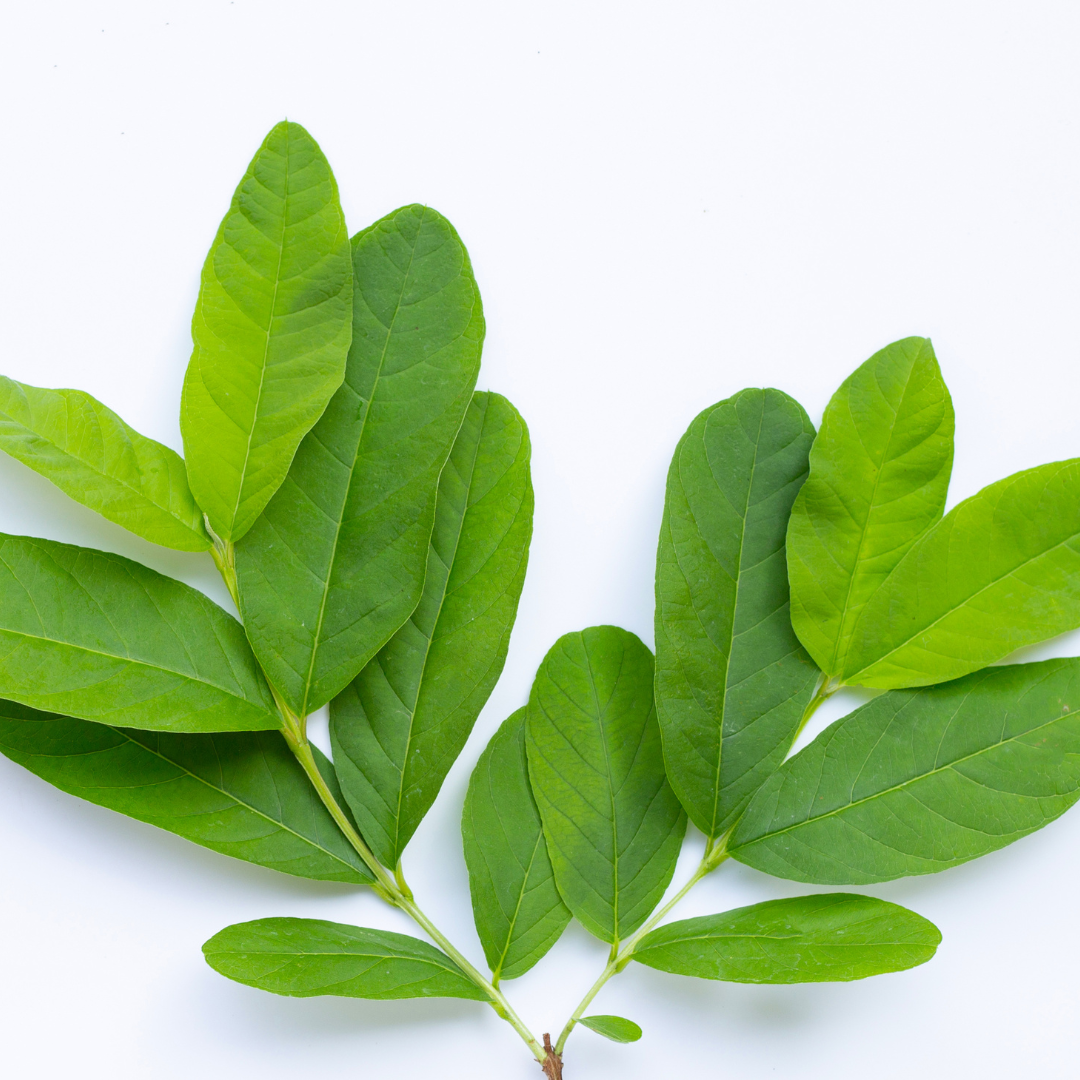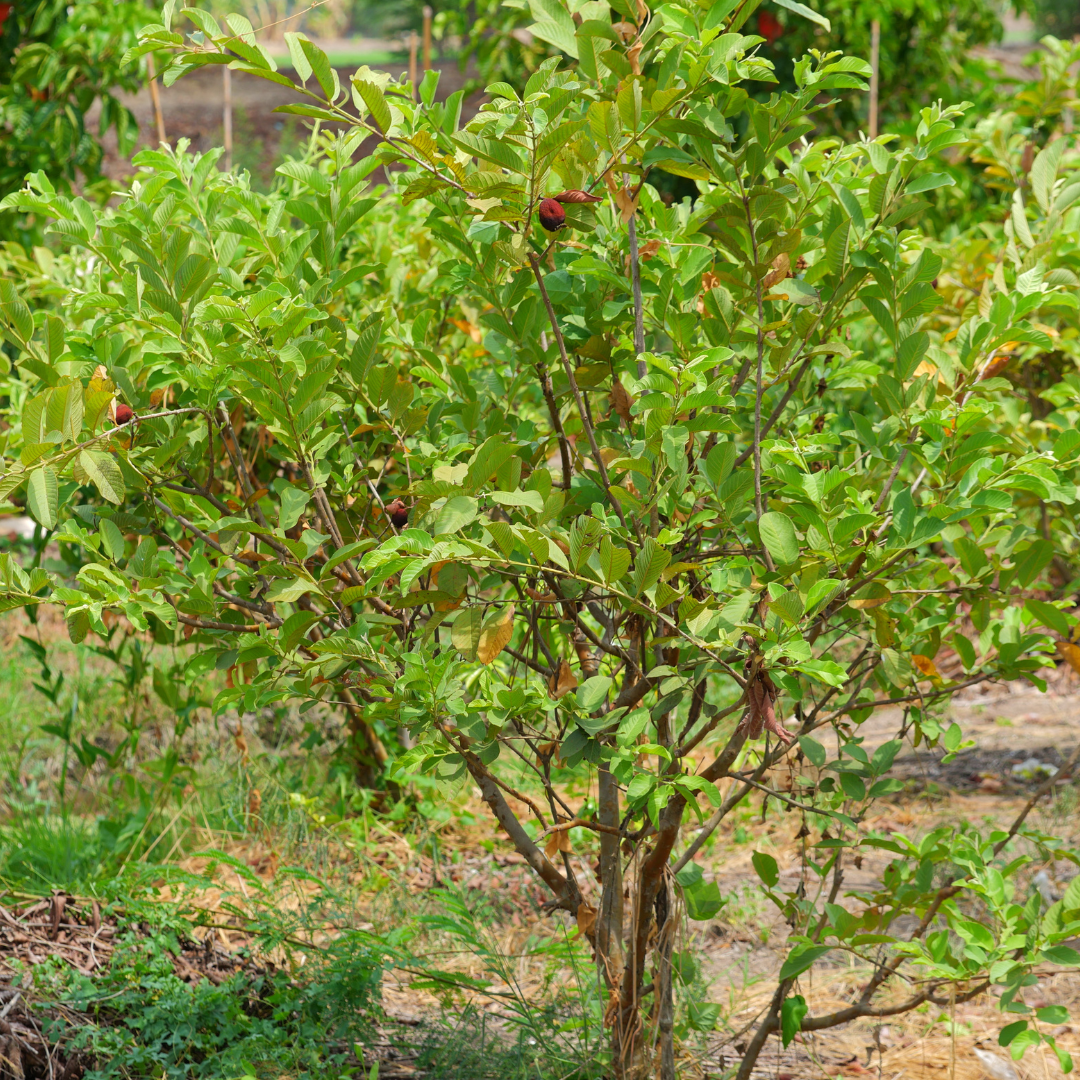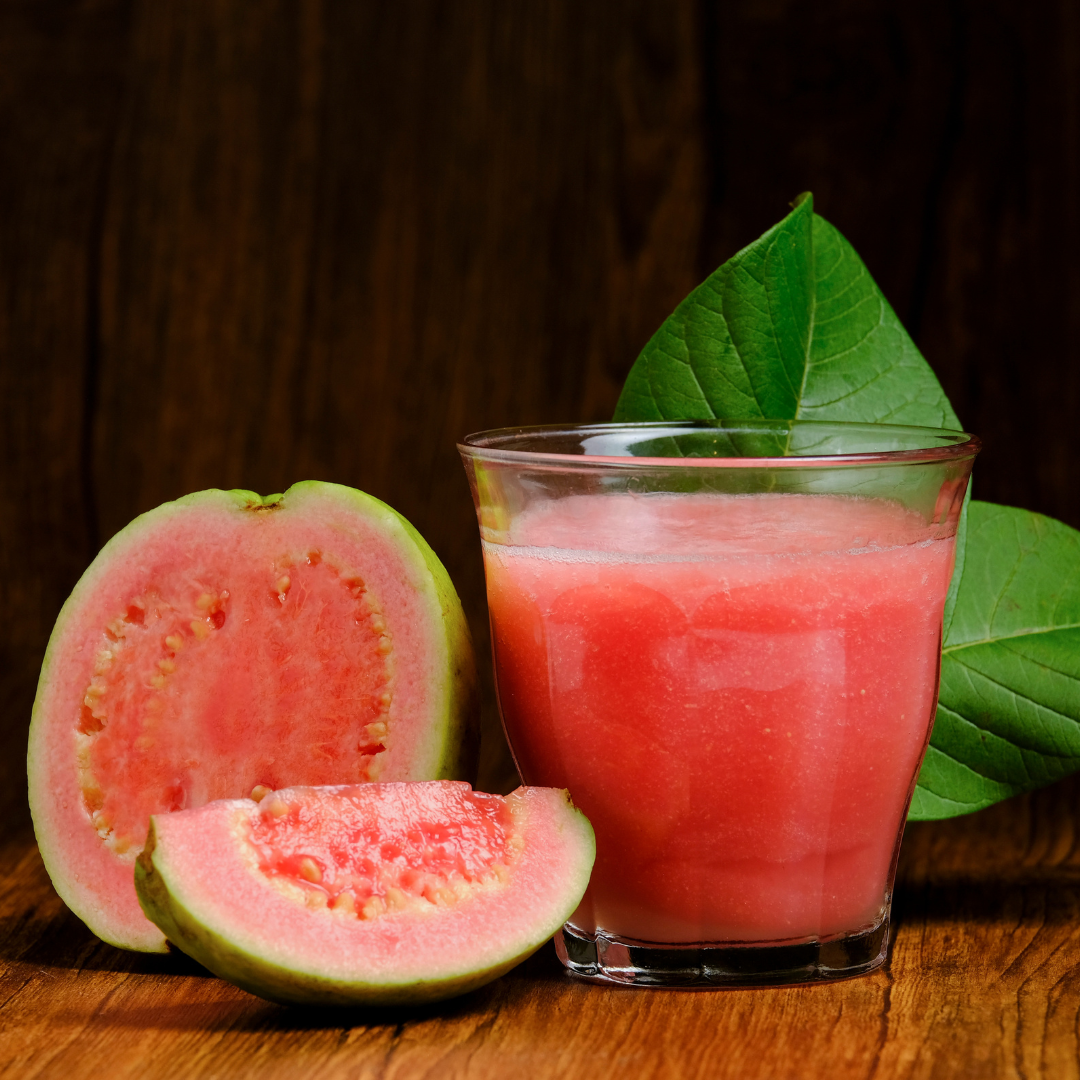From the Himalayas to Kanyakumari, guava is a popular fruit among every Indian household. Many of us likely have fond memories of growing up with a guava plant in our backyard, reminding us of our good old childhood days. The scientific name of guava is Psidium guajava, belonging to the family Myrtaceae. It is commonly known as the poor man's apple, owing to its low price and high nutritional value.. Seeing the fondness, no one can ever guess that guava was actually introduced in India from South America. However, guava varieties are now widely cultivated across India. With the introduction of a hybrid guava plant, it has become a fruit produced throughout the year irrespective of the season.
What are Popular Guava Varieties for Your Garden
Guava comes in numerous varieties that are now a staple in many households. Here are a few for you to explore.
Yellow Strawberry Guava (Psidium cattleianum) :
A small evergreen tree that grows up to 20 feet tall. It is hardy, that thrives in tropical and subtropical regions. It has small, round fruits with a sweet, strawberry-like flavor. It is also called cherry guava because of its small size compared to other common guava varieties. Cherry guava is commonly grown for ornamental purposes due to its green foliage and amazing fruit.
Golden 8 Guava (Psidium guajava) :

It is a medium-sized fruit grown in tropical areas. A bright pink flesh is visible inside the green skin. It might give you the illusion of a tennis ball from a distance. The fruit is full of sweet, tangy flavor with small edible seeds. Most importantly, it is rich in vitamin C, fiber, and antioxidants, making it a perfect healthy snack for your weight loss journey.
Variegated Guava :

Variegated guava is a striking variety known for its unique, striped green and yellow skin. The fruit's flesh is typically sweet and flavorful, similar to regular guavas, and packed with nutrients like vitamin C and fiber. Aside from its delicious taste, the variegated guava plant is often grown for its ornamental appeal, making it a popular choice for home gardens.
Red Strawberry Guava (Psidium guajava) :

Known for its deeper red flesh, Red Guava offers a sweet, robust flavor and is similarly rich in nutrients like vitamin C and antioxidants. It’s a great addition for those seeking a bolder taste in their guava.
Buy Red Strawberry Guava Plant
Seedless Guava :

Seedless guava is a smooth, sweet variety that lacks the hard seeds found in regular guavas. Rich in vitamin C, fiber, and antioxidants, it’s ideal for fresh eating, juices, and jams. This easy-to-grow fruit offers a delicious, seed-free option for home gardens.
Thai Guava(Psidium guajava) :

This larger variety is distinguished by its crunchy texture and mild flavor, making it perfect for salads and snacking. Its size and crispness set it apart from other guava varieties.
Taiwan Pink Guava(Psidium guajava) :

A hybrid variety, Taiwan Pink Guava boasts a unique blend of sweet flavor and year-round fruiting ability. Its bright pink flesh and consistent yields make it a popular choice for gardeners.
Buy Taiwan Pink Guava Plant
How to Grow a Guava Plant: Step-by-Step Guide
Here’s a step-by-step guide to caring for your guava plant.
Best Growing Conditions for a Guava Plant Ideal Soil and Climate :

- Grows best in tropical and subtropical regions up to 1,500 m altitude.
- Prefers sunny days with cooler nights (10-12°C) during fruit development for better quality.
- Tolerates high temperatures up to 45°C and drought conditions.
- Drip irrigation enables cultivation in low-rainfall areas.
- Sensitive to severe frost and near-freezing temperatures.
- Frequent rain during harvest can lower fruit quality and increase pest infestations (borer, fruit fly).
- Thrives in various soil types: sandy, loamy, or rocky soils.
- Light sandy soils in river basins are ideal for high-quality guavas in North India.
- Performs well in red lateritic soils.
- Tolerates soils with a pH of up to 8.5.
- Not suitable for saline or alkaline soils.
Growing a Guava Plant from Seeds vs Cuttings :
- Planting Guava Seeds:Steps to plant and grow guava from seeds.

- Guava seeds should be sown immediately after extraction from ripe fruits for better germination rates.
- Soaking stored seeds in water overnight can enhance germination.
- In North India, covering seed beds with white polythene during winter improves early and better seed germination.
- Seedlings used for planting should be sourced from high-quality fruits for best results.
- Propagation through Cuttings: How to grow a guava plant from cuttings for faster growth.

- Select a healthy cutting from 1-2 year old guava trees. Take the precise cut at nodes having 2- 3 leaves.
- To encourage root growth, dip the bottom of cutting in growth hormone.
- Use a well-draining soil and add sand or perlite to make it more permeable.
- Plant the cutting 2-3 inches deep into the soil. Gently pat the soil around stem cutting.
- Water the plant according to humidity level. You can maintain the moisture level by creating an artificial greenhouse dome with the help of a plastic bag.
- Check for root formation after two months by gently pulling the cutting.
- After the confirmation, transplant the plant to the sunny area of your garden.
Guava Plant Care Tips: Protecting from Diseases and Pests

Common Guava Diseases and Care Solutions
Guava plants can be affected by pests like fruit flies and diseases such as leaf spot and anthracnose. Organic pest control methods, such as neem oil, or chemical interventions can be employed to keep these issues at bay.
Best Practices for Guava Plant Care
- Pruning and Maintenance: Regular pruning helps improve fruit production. Remove dead or diseased branches to maintain the plant's health and appearance.
- Fertilization Tips: A balanced fertilizer applied at the right times can significantly enhance the yield. Organic options like compost also work well for guava plants.
Health Benefits of Guava Fruit: Why You Should Grow Guava

Nutritional Value of Guava Fruit
- Guava is considered a superfruit due to its high nutritional content.
- Rich in dietary fiber, vitamins A and C, folic acid, pectin, calcium, phosphorus, and essential minerals.
- Contains about five times more vitamin C than oranges.
- Packed with carotenoids, contributing to its antioxidant properties.
- Lycopene, the main carotenoid in guava, is responsible for the pink color of its pulp and provides additional health benefits.
Other Benefits of Growing Guava Plants
- Guava Leaves have traditionally been used in tea making and home remedies for a long time. It has numerous medicinal benefits. Guava leaf tea can support metabolism and aid weight loss. It also treats acne and skin infections. It has become a proven fact now that guava leaves decrease blood sugar level.
- The Guava plant has many environmental benefits as well. Being a hardy plant, it survives in drought conditions. It has less water requirement making it a perfect plant for water scarce regions. Its roots help reduce soil erosion in flooded areas.
Why You Should Grow a Guava Plant at Home
Starting your own guava garden is not only a rewarding experience but also a step toward boosting your overall wellness. Guava are relatively easy to grow, low-maintenance, and thrive in various regions. Imagine having your own source of vitamins, antioxidants, fibers, and many other essential nutrients packed inside just a single guava fruit. Grown by your own hand in your own pesticide-free environment to assure organic richness.Guava is an eco-friendly addition to your garden which fits well and provides a consistent yield of nutritious fruit. Visit Paudhewale to choose from a variety of guava plants and get expert advice on growing your own tree. Shop now and bring the benefits of fresh, homegrown fruit to your family!


